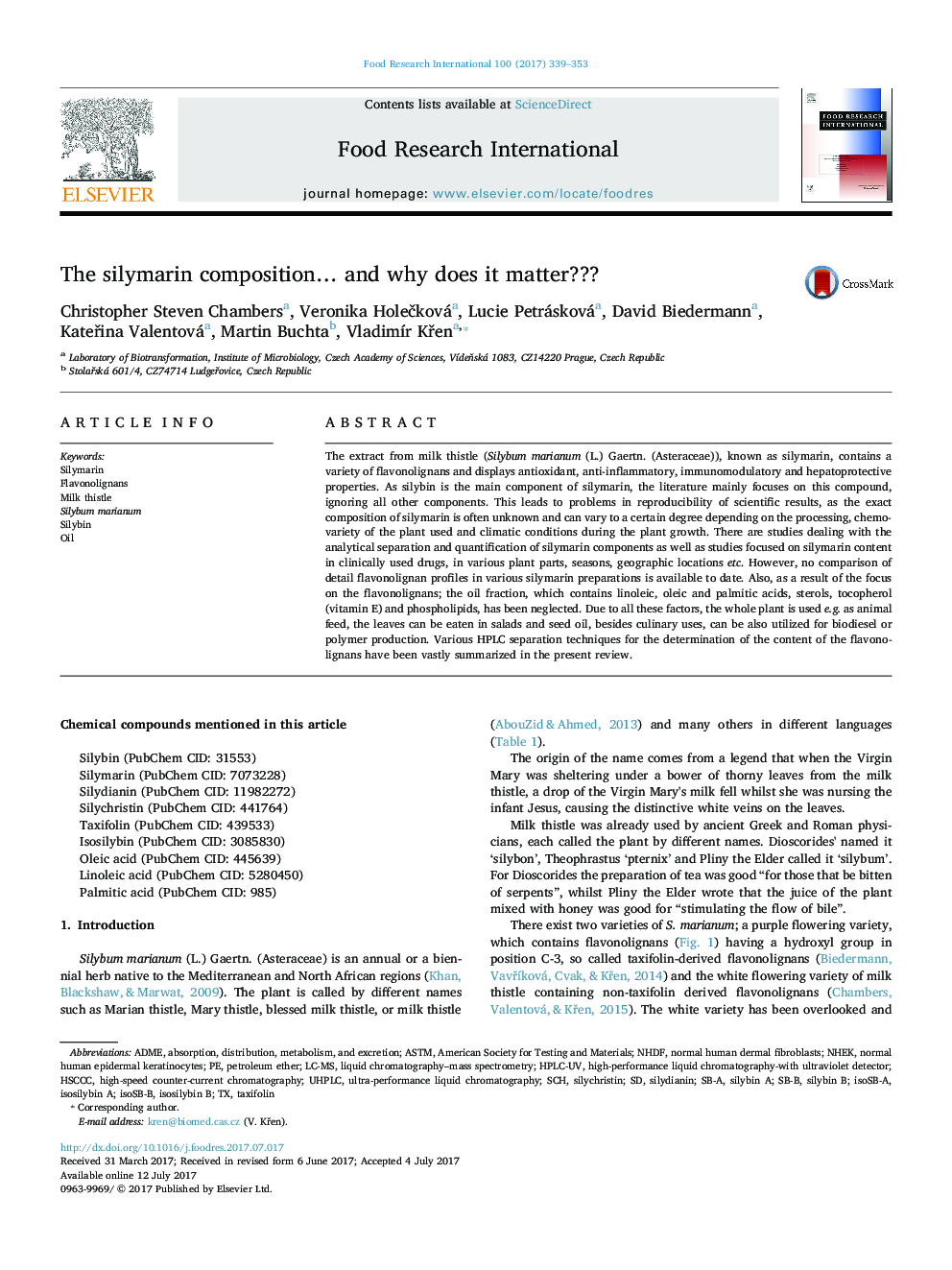| کد مقاله | کد نشریه | سال انتشار | مقاله انگلیسی | نسخه تمام متن |
|---|---|---|---|---|
| 5767730 | 1628451 | 2017 | 15 صفحه PDF | دانلود رایگان |

- This review describes all components of the medicinal plant Silybum marianum.
- Silymarin as crude extracts from S. marianum seeds contains flavonolignans.
- Variations of silymarin components due to cultivation and production are described.
- Silybum cultivars and chemoraces are discussed; analytical methods are reviewed.
- Use of seed fractions, e.g. fats, oils, vaxes, fibers, flour in food is discussed.
The extract from milk thistle (Silybum marianum (L.) Gaertn. (Asteraceae)), known as silymarin, contains a variety of flavonolignans and displays antioxidant, anti-inflammatory, immunomodulatory and hepatoprotective properties. As silybin is the main component of silymarin, the literature mainly focuses on this compound, ignoring all other components. This leads to problems in reproducibility of scientific results, as the exact composition of silymarin is often unknown and can vary to a certain degree depending on the processing, chemo-variety of the plant used and climatic conditions during the plant growth. There are studies dealing with the analytical separation and quantification of silymarin components as well as studies focused on silymarin content in clinically used drugs, in various plant parts, seasons, geographic locations etc. However, no comparison of detail flavonolignan profiles in various silymarin preparations is available to date. Also, as a result of the focus on the flavonolignans; the oil fraction, which contains linoleic, oleic and palmitic acids, sterols, tocopherol (vitamin E) and phospholipids, has been neglected. Due to all these factors, the whole plant is used e.g. as animal feed, the leaves can be eaten in salads and seed oil, besides culinary uses, can be also utilized for biodiesel or polymer production. Various HPLC separation techniques for the determination of the content of the flavonolignans have been vastly summarized in the present review.
Journal: Food Research International - Volume 100, Part 3, October 2017, Pages 339-353